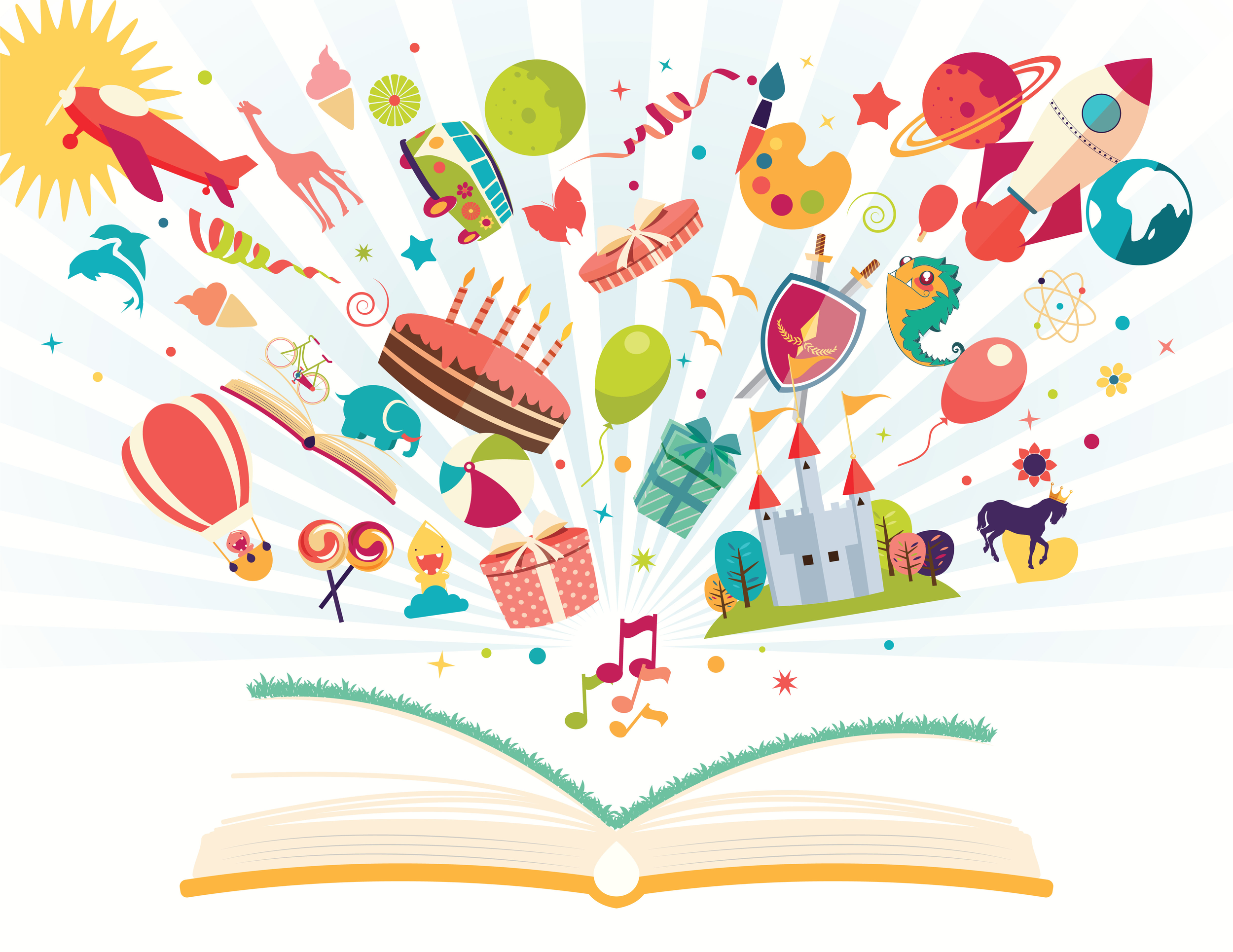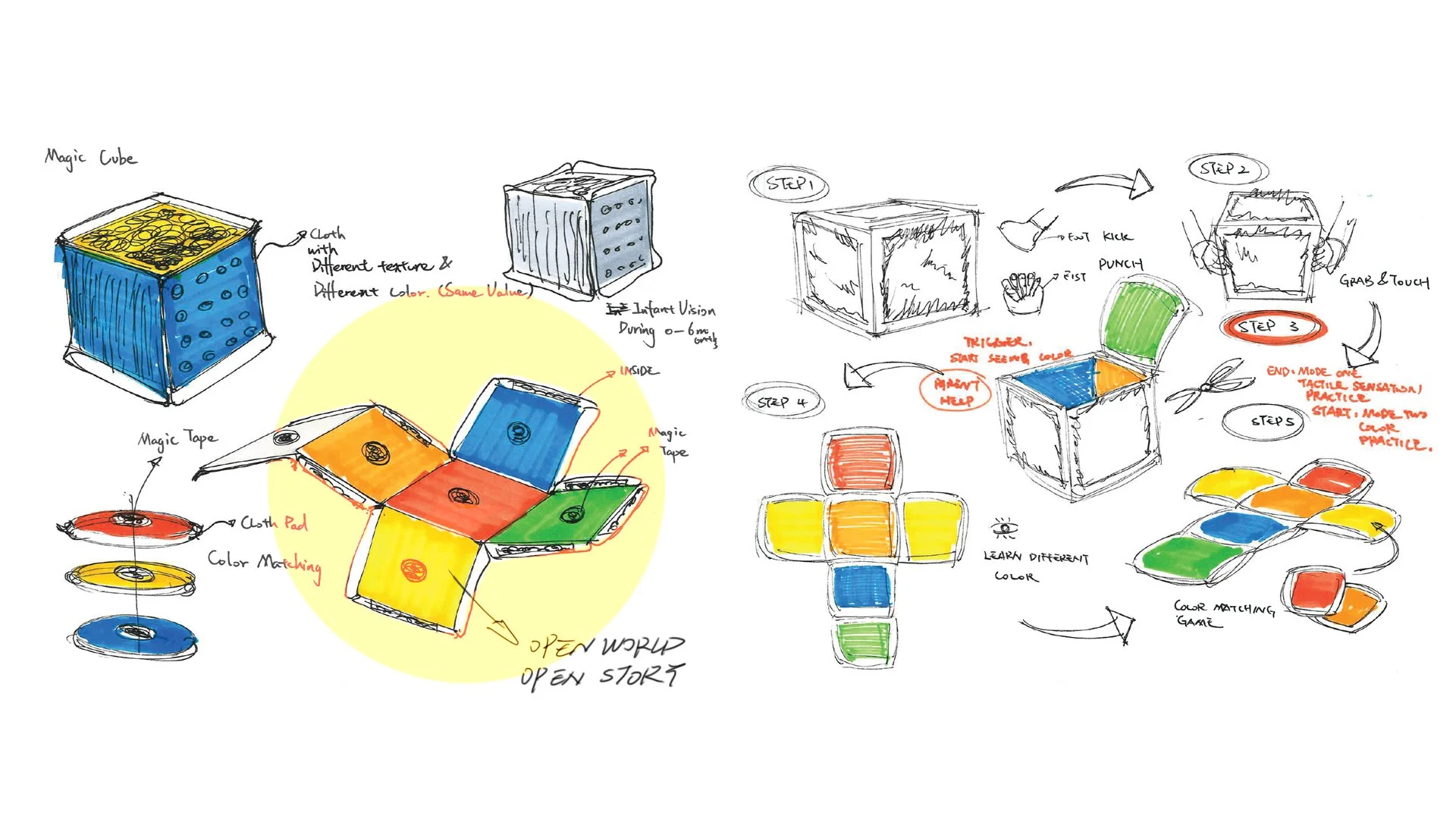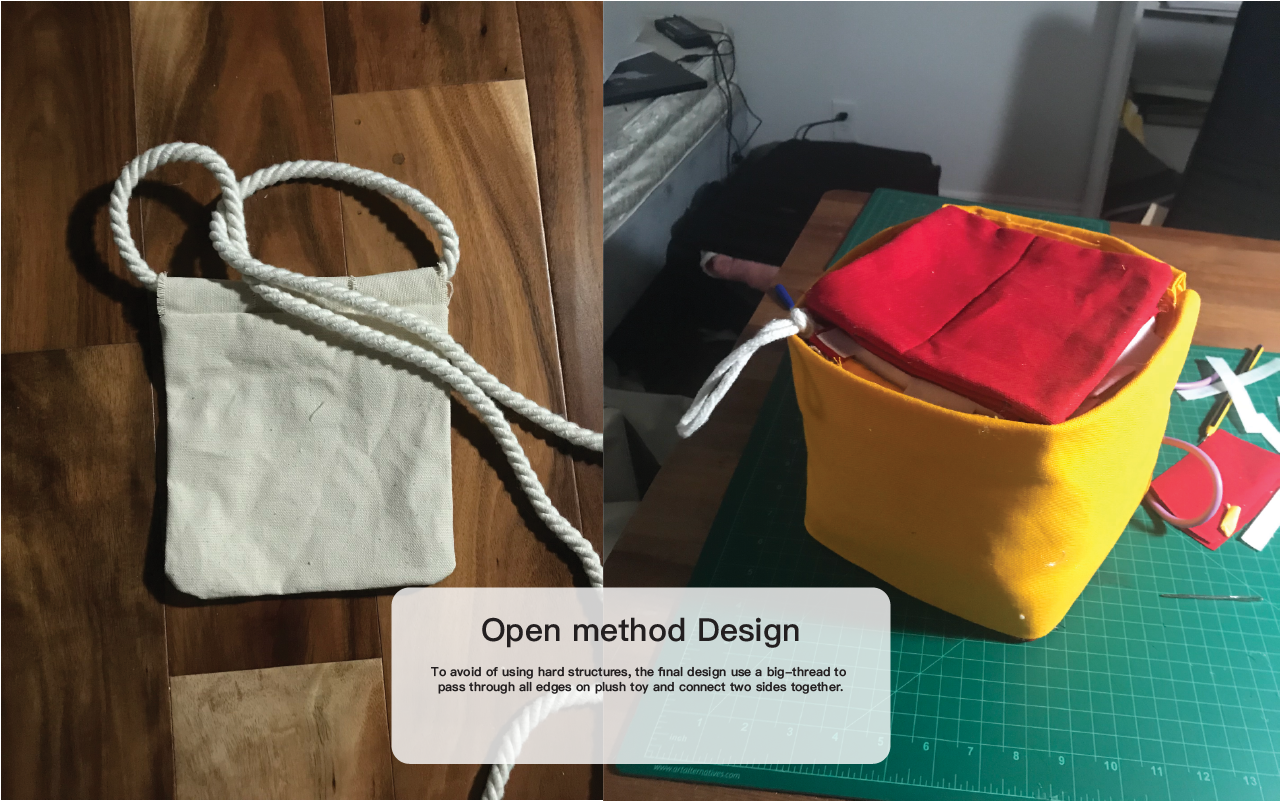Sustainable design strategy for product life + beyond.
Time Line: FA 2018, 14 weeks, Individual Project
Project Goal: Presents a new strategy for incorporating the concept of re-purposing in the product design, which aims to extend the longevity of products by intentionally designing features.
An Educational Toy for Early - Continued Baby Development
From a plush toy to a book, dedicated to the primary and advanced tactile and visual development of infants for 0-12 months.

It took 6 million years for humans to learn to walk upright, get out of the grasslands and bushes, learn to use tools, and gradually form civilization.

However, a newborn baby learns to walk, use tools, and language in just 1 year.
We believe that infant growth is a rapid microcosm of human evolution, and that infant growth is sequential, staged, and requires the use of both hands to aid development as well.
Humans use their hands to make tools to survive, and toys are essential to infant development.
3010 BCE
The oldest toy excavated from the Indus Valley civilization
Toys excavated from the Indus valley civilization (3010–1500 BCE) include small carts, whistles shaped like birds, and toy monkeys which could slide down a string.
3.27
billion U.S. dollars
Retail sales 3.27 billion U.S. dollars of infant/toddler/preschool toys in the United States in 2020.
Single-function, independent toys do not fit perfectly with the developmental process of infants and the rapid replacement of single-function toys places a financial burden on families as well as taking up a lot of home space.
71 Toys
$581 / yr
When it comes to toys and playthings, with the average household studied owning 71 toys. One fifth of households possessed more than 100 toys.
The average family spends $581 a year on toys.
… And this is contributing to the amount of plastic ending up in landfill and oceans.
4 Toys
1/4
Babies have an average of four toys they've never played with.
More than a quarter of parents admit to throwing away toys that are in perfect working order.

What if we could …
Find a way to help our little ones perceive the world in a sequential and progressive way and develop self-learning and solving skills.
… and build a sustainable future for our little ones.
Here’s how we help our little ones
Rich Content.
Rich content to cover the needs of infants.
Continuous surprises.
Continuously surprise them to keep the toys always new to infants.
Stimulate imagination.
Stimulate the imagination to make it pivotal to maintain desirability.
Design Process
Rich content to cover the needs of infants
Covering a longer span of training needs for infants
Includes more refined learning goals for infants
Continuously surprise them to keep the toys always new to infants
Set levels so that children can pass only after their abilities have improved.
Learn from the past, new skills plus old knowledge.
Stimulate imagination to make it as pivotal to maintain desirability
Babies have the opportunity to imagine a world that belongs to them by the things they come into contact with, and the greatest joy is to bring this world to fruition.
Babies are destructive, don't limit them, let destruction be their tool for exploration


















